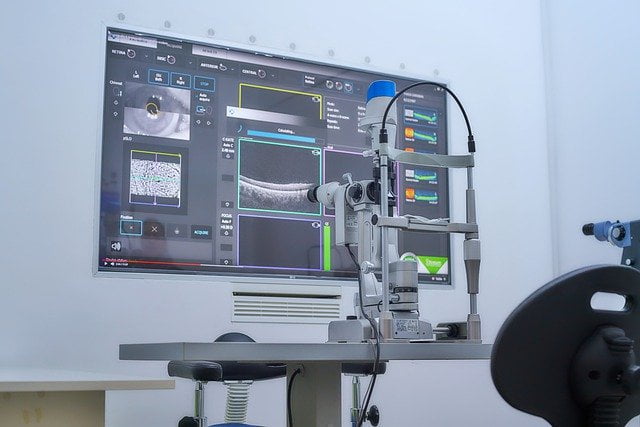What is Glaucoma?
Glaucoma is a condition in which increased pressure inside the eye damages the optic nerve and can lead to loss of side vision and eventually blindness. When detected early, glaucoma can be effectively treated and controlled, therefore preventing severe vision loss. Unfortunately, glaucoma is painless and slowly progresses, thus without an eye examination it can be missed.
Am I at Risk for Glaucoma?
Risk factors for glaucoma include: African or Hispanic descent, over the age of 60, positive family history, diabetes, sleep apnea, large amounts of nearsightedness, eye injury, and certain medications.
What Can I Do To Prevent and Treat Glaucoma?
Early diagnosis is key to preserving vision. This is best done by having routine eye examinations. If a patient is diagnosed with glaucoma, he will be followed more regularly and treatment is designed to regulate the intraocular pressure (IOP). Treatment options include: medicated eye drops, laser procedures, and/or minor surgical procedures.
Glaucoma Advanced Technology Testing
Optical Coherence Tomography (OCT): This test takes a cross section of the retina or optic nerve to obtain detailed images. It is used extensively to diagnose and manage glaucoma, macular degeneration, and to assess for problems associated with diabetes.
Visual Field Test: This measures your side vision, also known as your peripheral vision. The visual field test determines the extent and depth of loss to appropriately manage glaucoma and macular degeneration. It can also detect some neurological disorders such as strokes and tumors.
Measuring Intraocular Pressure (IOP): We have multiple ways to assess if you are at risk for glaucoma or to monitor your glaucoma. The non-contact tonometer (air puff test) is used as a screening on all patients and if this device cannot be utilized, we have the portable Icare tonometer, a quick and painless technique. Lastly, we offer applanation tonometry, which is the standard of care for measuring IOP.
Corneal Pachymetry: This measures the thickness of your cornea, an important factor to determine your risk for glaucoma.
Diopsys Electroretinography: ERG provides objective, functional information about the performance of the inner retinal cells of the eye. ERG has been recognized as an effective testing helping to diagnose and manage diseases including: macular degeneration, glaucoma, and diabetic macular edema.
Diopsys Visual Evoked Potential (VEP): VEP provides objective, functional data about the entire visual pathway from the retina to the visual cortex of the brain. VEP has been used to help doctors diagnose and manage disorders such as glaucoma, optic neuritis, traumatic brain injury, and amblyopia.

